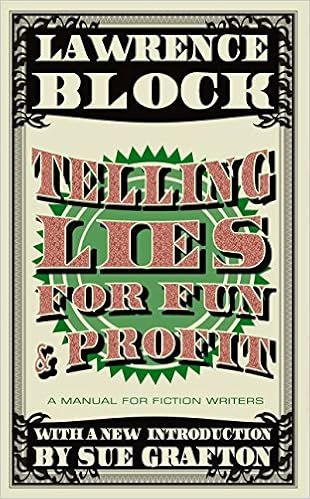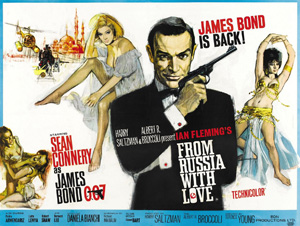 1. Critiquing a Grand Master. If you are a fan of the late great Donald E. Westlake you owe it to yourself to take a look at The Westlake Review. The blog's owner, one fredfitch, explains that his mission is simple: "Reviewing every book Donald Westlake ever wrote. Because I can."
1. Critiquing a Grand Master. If you are a fan of the late great Donald E. Westlake you owe it to yourself to take a look at The Westlake Review. The blog's owner, one fredfitch, explains that his mission is simple: "Reviewing every book Donald Westlake ever wrote. Because I can." And these are not reviews in the sense of should-you-buy-it three-and-a-half-stars types. No, he wants to discuss the themes, the context, how it fits into Mr. W's ouevre and so on. As I write this the most recent work under the microscope is Comfort Station, in which Westlake, under a pseudonym, applies Arthur Hailey's Airport or Hotel style pomposity to the vibrant humanity of a public restroom in Bryant Park.
I don't know the author's real name; Fred Fitch was the luckless hero of God Save The Mark. If you have read the Dortmunder chronicles and the Parker saga, you need this site.
2. E-book Mindfulness. I'm guessing that most of you buy e-books from time to time. But how do you do that? Here are a couple of hings to think about.
When I want to buy an e-book my first choice is Kobo. You can purchase a Kobo reader if you want, but I read mine on my iPad. I assume they work on the other tablets. The reason I prefer Kobo is that they have a deal with the American Booksellers Association. I go to the website of my favorite independent bookstore, click on Search for E-books, and when I buy something part of the money goes straight to that bookshop. My way of helping them stay in business.
If Kobo doesn't have the book - not all publishers play nice - I buy a Kindle edition. But I don't go directly to Amazon to do so. There are others out there who have deals with Amazon, you see.
 Kevin R. Tipple is an excellent book reviewer who also aggregates a lot of news about our field at his website Kevin's Corner. His family has accumulated some horrific medical expenses for reasons you can find on his page. So I go to his site and click on the Amazon button there. When I buy a book he gets a sliver of the dough. It doesn't raise my price and I would rather he get it than the company one bookseller I know calls SPECTRE.
Kevin R. Tipple is an excellent book reviewer who also aggregates a lot of news about our field at his website Kevin's Corner. His family has accumulated some horrific medical expenses for reasons you can find on his page. So I go to his site and click on the Amazon button there. When I buy a book he gets a sliver of the dough. It doesn't raise my price and I would rather he get it than the company one bookseller I know calls SPECTRE.Before I found out about Kevin's case I used to buy my Amazon books through the Wolfe Pack page. This is the official organization for Rex Stout fans and I was happy to put a few cents in their coffers when I bought an e-book.
I'm not suggesting you should make the same choices as me, but I do suggest you think about your e-book choices. And let me know what you think in the comments.
3. To make you wonder. I have mentioned Wondermark before. It is probably my favorite webcomic, a steam-punk-friendly combination of Victorian book art with modern problems. Here is one of David Malki!'s (yes, he includes the exclamation point in his name) recent comics that seems relevant to our website's subject:
And here and here are two more.
4. I'm from the government and I am here to help you. I may have mentioned a few hundred times that I am a government information librarian. One of my colleagues, Daniel Cornwall, has created a guide to government information specifically for all the writers out there.
Here are a few random samples of the questions he offers to answer for you:
 + What are guidelines for reports of possible criminal activity involving foreign intelligence sources?
+ What are guidelines for reports of possible criminal activity involving foreign intelligence sources?+ What are the symptoms of inhalation anthrax?
+ What are some of the relationship complications of pretending to be dead?
+ How can I find a name so rare, that it was only given to five or so babies in 1980?

Get your facts straight so readers like me don't whine at you!
5. My two pages worth. B.K. Stevens had (at least) two brilliant ideas this year. One was to join SleuthSayers (yay!). The other was to start her exciting new blog The First Two Pages. Each week a different writer steps in to explain what he or she was trying to accomplish in the very beginning of a book or short story. I am delighted that this week it is me, talking about my new novel GREENFELLAS. Thanks for the opportunity, B.K.!








![Pageflex Persona [document: PRS0000037_00019] Pageflex Persona [document: PRS0000037_00019]](https://blogger.googleusercontent.com/img/b/R29vZ2xl/AVvXsEgNBBRth-kt8oKPFJ8l8E5zo7QX_dp6Cx88inRZWahp3j5grv5_s2hDlo_e8cMe2BXDcHGR6bcFI8eBaBqDgtrCm3dL8GfkngJ_AnHozOabjzrJM4DxAFLIpxJW7q1GlSCfHcxqXnL6CSM/?imgmax=800)






)






